The saffron plantation
of St Cirq Lapopie
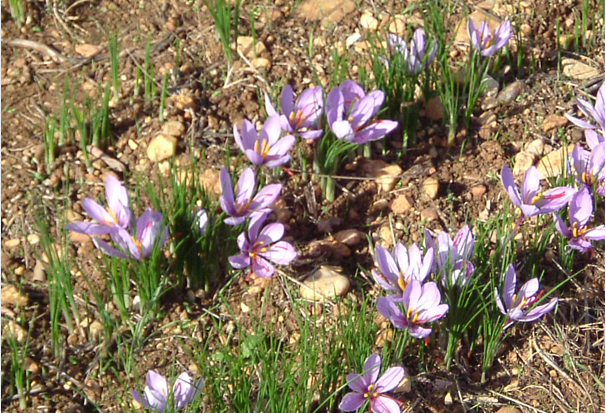
What a pleasure it is to be at the plantation facing the magnificent expanse of the limestone plateau, the habitat of our ancestors.
It is situated at St Cirq Lapopie, one of the most beautiful villages in France and is well exposed, north to south, with a sandy clay soil.
The sloping ground (allowing drainage) was fallow land, and was enriched with organic compost.
Our climate, half Atlantic and half Mediterrean, is favourable to the adaptation of this plant.
The saffron farm is organic.
An organic and traditional cultivation
Organic farming seem inevitable to us because it is our way of life, oriented towards herbal medicine, energetics and harmony between mankind and his environment.
Planting
Planting is done by hand, in the traditional way.
The bulbs come from the organic production from the Safranério and the association of saffron cultivators of the Quercy. They are planted 15cm deep, and spaced out about 20cm, depending on their size. After two to three years of cultivation, the bulbs are unearthed and sorted in June and July, during their dormant season. The rows are spaced apart wide enough to get through and allow for future plantations. Other plots are lying fallow. We clear the plots by hand, as the saffron finds certain weeds toxic. A light hoeing is done, in order to break up the soil taking care not to expose or damage the bulbs.
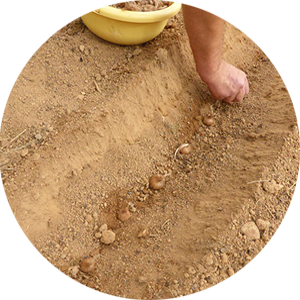
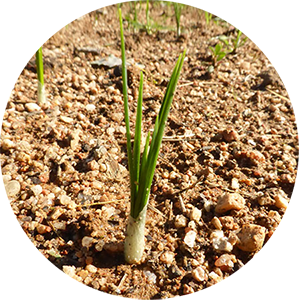
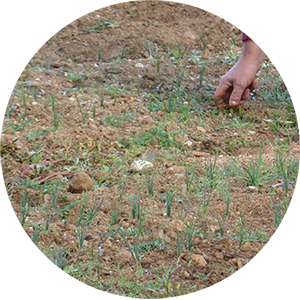
The harvest
The harvesting takes place in October, daily and by hand.
The flowers come out at night and it’s enchanting to watch the mauve flowers sparkle in the morning calm and the autumn sun. We pick the whole flower as early as possible in the morning, still shut in order to preserve the quality of the stigmas.
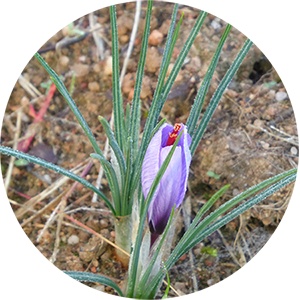
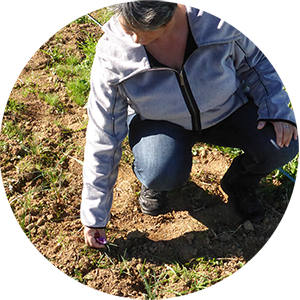
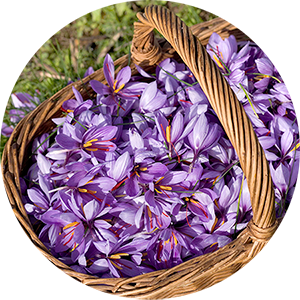
Cutting and drying
Then comes a swift trimming.
We carefully cut off the red pistils – which contain the strongest concentration – just above the yellow style. The latter lowers the saffron’s value.
Drying is performed :
Drying takes place in a oven kept at a constant mild temperature. The saffron should be sufficiently dry, but not breaking up. After losing 80% of its weight, the pistil finally becomes the spice.
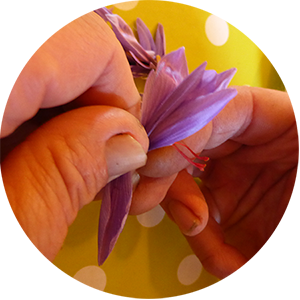
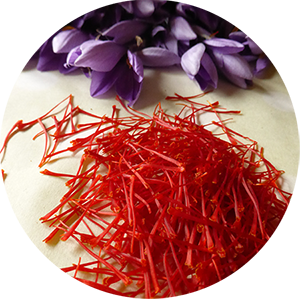
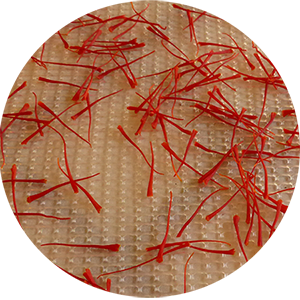
The preservation
The saffron is stored in a hermetically sealed pot, away from air and light, to keep all the aroma of the spice.
All these steps are very important; they are guarantees of the saffron’s quality. We take great care and respect in our work and to the saffron.
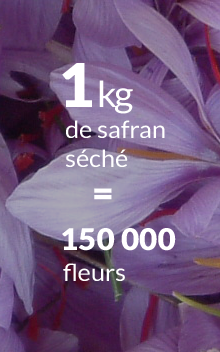
SOME FIGURES
The yield per hectare, depending on how it is grown and produced, varies on average between three to six kilograms.
To get five kilograms of fresh stigma – which makes one kilogram of dried saffron, we must pick about 150,000 flowers – about 80 kilograms.
150-200 flowers are needed to make one gram of dried saffron.
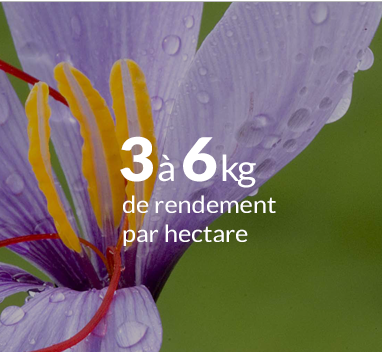
The Saffron of Quercy is situated in the Lot – in the heart of the South West.




